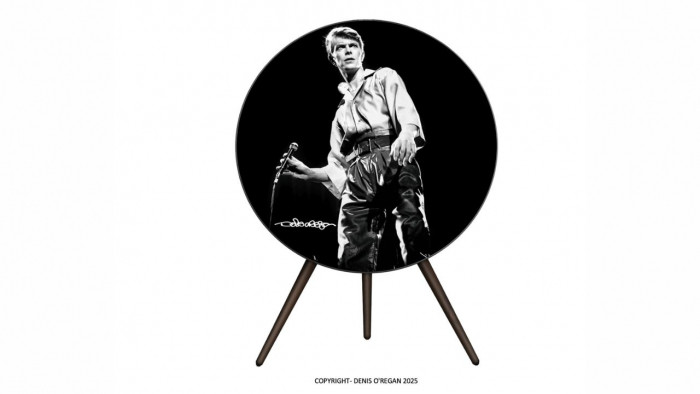Everything you need to know about the Virtual Reality revolution
Everything you need to know about the Virtual Reality revolution


Fetch your wallets, the Oculus Rift has finally got a release date! Well, sort of.
One of the most exciting devices in the fresh wave of Virtual Reality technology has pencilled in a consumer launch for "early 2016". Once a Kickstarter success story, now a Facebook-backed machine, the Rift is promising to give video games an aspect of reality the gaming industry has been chasing since the 90's.
But is it the future of entertainment, or is set to fade away into the background like a dust-covered 3D television? Here's everything you should know about the forthcoming VR revolution.
It's not new

Much like the undulating popularity of 3D, Virtual Reality headsets are anything but new. The first was made back in the Eighties, when dreadlocked Silicon Valley rock star/guru Jaron Lanier popularised the phrase ‘virtual reality’. He developed the first virtual worlds and impressed Nasa with his multi-sensory DataGlove and goggles - which failed to catch on.
Other attempts to use 3D tech included the TommyTronic3D, a Japanese toy-maker’s binocular LCD video game found moderate fame with primitive 3D titles including Shark Attack (it’s pretty self-explanatory).
Nintendo had a good stab at the notion as well, releasing the Virtual Boy in Japan and America in 1995. The creation of the original Game Boy designer Gunpei Yokoi, modern VR attempts like the Oculus Rift echo the design of the Virtual Boy with its headset and separate controller unit.
Nintendo's plucky offering was killed off by a combination of high price point, poor technology (there was no head tracking, and some gamers complained of altogether underwhelming graphics) and motion sickness. After a brief flirt with a 3D attachment for the GameCube, Nintendo finally found a home for their 3D technology with the 3DS.
It doesn't have to be expensive

While the Oculus Rift should cost in the region of £130-260, you don't have to fork out cash to experience eye-popping VR.
The opensource Google Cardboard project has been letting Android users turn their smartphones into inexpensive VR experiences for some time now. You can either make your own cardboard face mask for your mobile, or buy one, like the £19.99 Dodocase.
Much like Nintendo's Virtual Boy, not all of the early VR experiences for smartphones are able to track your head movements - but there are more and more advanced version dropping into the Google Play store all the time.
If and when the technology catches on, it's only going to increase the number of developers able to create immersive, head-spinning worlds for you play through on your bus ride home. Just remember not to accidentally punch the little old lady sitting next to you when questing through dungeons.
It's not just about games...

While much of the early hype for the fresh VR craze is being made by the gaming community, the latest technology has a wider range of potential than shooting towering monsters in your jammies.
Current examples include the Museum of Stolen Art, allowing users to navigate an art gallery without leaving their home, while Paul McCartney filmed his recent Live and Let Die concert in full 360 degrees of 3D. A range of film makers are getting stuck into the tech - the most promising of which is titled RISE. Rather than limiting viewers to a particular range of vision, VR films will allow you to wander around the scene, looking at individual details or even gazing out of windows.
While 3D technology promised to deliver similar thrills to entertainment and sports coverage, the immersive effects of VR could deliver a real sense of being "in the moment". Sure, the projector in your local isn't going to be replaced with a collection of VR headsets any time soon, but watching tennis matches or golf in your living room could be about to change for the better.
Also, having splashed some $2 billion on Oculus Rift, you can bet that Facebook has some big social plans for VR. Mark Zuckerberg stated in a post back in March 2014 that the web giant had big plans for the technology, building computer-generated environments for people to 'hang out' in. Which sounds a bit like Second Life - which has also got Oculus Rift support.
...but VR gaming has the most potential

Ever since Oculus Rift rejuvenated VR with its successful Kickstarter project back in 2012, virtual gaming has taken centre stage.
Long before any purpose built big-money titles start rolling out on consoles and PCs, bedroom VR fanatics have been tweaking existing titles to work with headsets - like this mesmerising build of GTA V.
But VR won't just let you get up-close to ordinary video games. Earlier this year the Google-backed Magic Leap showed off a video of a game concept it's apparently been "playing around the office right now" - a 'mixed reality' game, which saw robotic invaders pop up around a physical office space.
While Magic Leap's vision might be a long way from completion, terrifying VR horror titles and leaping around your sofa playing immersive Uncharted is all set to happen in 2016.
And the adult content might help

In the same way that the adult entertainment industry had a helping hand in furthering the success of VHS and Blu Ray formats, pornography could help shift VR from a flash in the pan to a long night in the sack. Or something like that.
The Red Light Center is currently looking to champion adult VR experiences, with other sex toy manufacturers and film makers looking to cash in on the virtual ride.
We'll leave you to Google the rest.
There are a lot of contenders for the VR crown
While Oculus and Facebook have certainly generated a lot of interest in the technology, there are several other important names looking to get in on the VR act.

The trailer blazer, aimed at gamers and computer tinkerers.
Arrives: Early 2016

Holographic computing. Forget keyboards and monitors, in the future you'll be swiping the air like an idiot.
Arrives: TBC

Virtual Reality for the PlayStation 4
Arrives: 2016

Another gaming and content streaming headset with an improbable number of pixels
Arrives: Late 2015

A fancy way to watch your films, TV and video games
Arrives: Out now

An interesting open-source project from Razer that lets pretty much anyone create a VR experience.
Available: The developer kit is out now
We'll find out more at E3
When the curtain lifts on the electronic expo of E3 on 16 June in Los Angeles, we'll get a much better idea of whether the VR craze will survive its first winter. Until then, grab yourself a cardboard box and make yourself sick with one of these apps...








